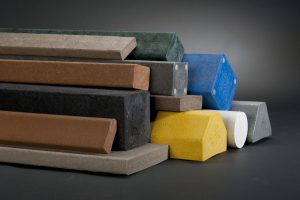The World of Materials: A Comprehensive Guide
Introduction
When it comes to the diverse and fascinating world of materials, it is easy to be overwhelmed by the sheer variety and complexity they encompass. From the ancient times of using stones and woods to the modern era of advanced composites and nanomaterials, our understanding and utilization of materials have evolved significantly. In this article, we will delve into the realm of materials science and explore the different types of materials that exist, their properties, and their vast applications across various industries.
1. Classification based on Chemical Structure
Materials can be broadly classified based on their chemical structure into four primary categories:
a. Metals
Metals are materials known for their high conductivity, malleability, and ductility. They consist of closely packed atoms arranged in a regular pattern, forming metallic bonds. Common examples include iron, aluminum, copper, and gold. Metals find applications in construction, electrical wiring, transportation, and more.

b. Polymers
Polymers are large molecules composed of repeating units called monomers. They exhibit a wide range of properties, from flexible and lightweight to rigid and durable. Plastics, rubbers, and fibers are all examples of polymers. The versatility of polymers makes them indispensable in industries like packaging, medicine, and textiles.
c. Ceramics
Ceramics are compounds formed by the bonding of metallic and non-metallic elements. They are typically hard and brittle with high melting points. Ceramics find use in pottery, bricks, tiles, and high-temperature applications like heat-resistant coatings and spacecraft components.
d. Composites
Composites are materials made by combining two or more distinct materials to achieve desirable properties not present in any single component alone. They are designed to harness the strengths of each constituent material. Carbon-fiber reinforced polymers (CFRPs) and fiberglass are examples of composites widely used in aerospace, automotive, and sporting goods industries.
2. Classification based on Physical Properties
a. Conductors
Materials with high electrical and thermal conductivity are known as conductors. Metals like copper and silver are excellent electrical conductors, while materials like silver and diamond exhibit high thermal conductivity. These properties make conductors crucial in electrical wiring, electronics, and heat transfer applications.

b. Insulators
Insulators, in contrast to conductors, have very low electrical and thermal conductivity. Rubber, glass, and ceramics are common insulating materials. They are extensively used in electrical insulation, protective coatings, and as dielectric materials in capacitors.
c. Semiconductors
Semiconductors have intermediate electrical conductivity that can be controlled or modified. Silicon and germanium are widely used semiconductor materials and form the basis of modern electronic devices like transistors and integrated circuits.
d. Magnetic Materials
Materials that possess magnetic properties are known as magnetic materials. They can be classified into ferromagnetic, paramagnetic, and diamagnetic based on their response to an external magnetic field. Magnetic materials are fundamental in the production of electrical motors, transformers, and data storage devices.
3. Classification based on Application
a. Structural Materials
These materials are primarily used for construction and load-bearing purposes. Common structural materials include steel, concrete, and wood, which are crucial in building bridges, skyscrapers, and residential structures.
b. Biomaterials
Biomaterials are specifically designed to interact with biological systems and are often used in medical applications. They can be used for implants, prosthetics, tissue engineering, and drug delivery systems. For citibuild builder vaucluse click here.
c. Electronic Materials
Electronic materials are essential for the manufacturing of electronic devices. They include semiconductors, conductors, and insulators, which are the building blocks of integrated circuits, transistors, and other electronic components.
d. Optical Materials
Optical materials are engineered to control and manipulate light. They find applications in lenses, lasers, optical fibers, and various imaging systems.
Conclusion
The world of materials is vast and diverse, with each type of material offering unique properties and capabilities. From metals to polymers, ceramics to composites, and conductors to biomaterials, materials science continues to drive innovation and shape our modern world. Understanding the different types of materials and their applications enables us to create advanced technologies, improve existing industries, and pave the way for a sustainable and technologically advanced future.
